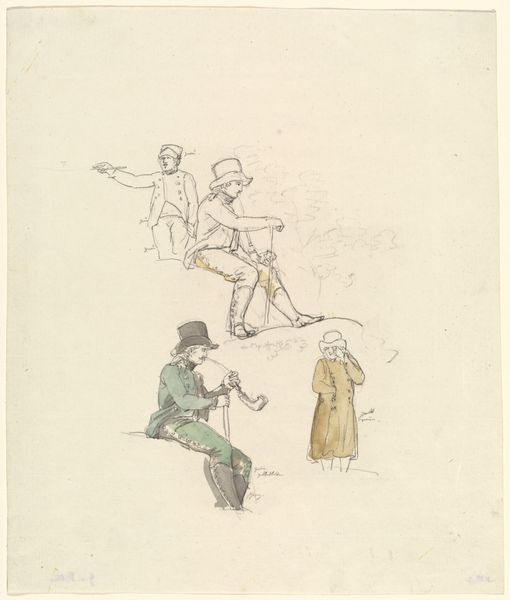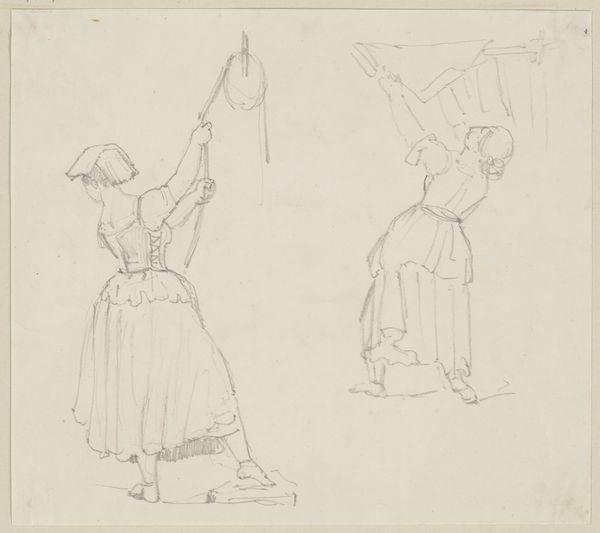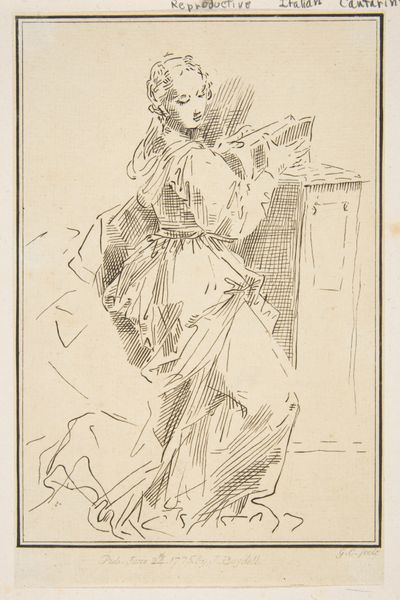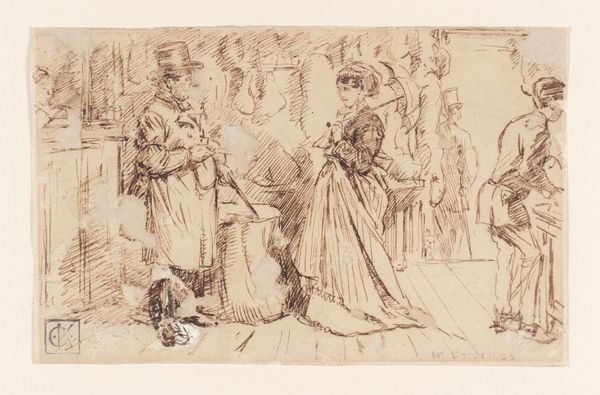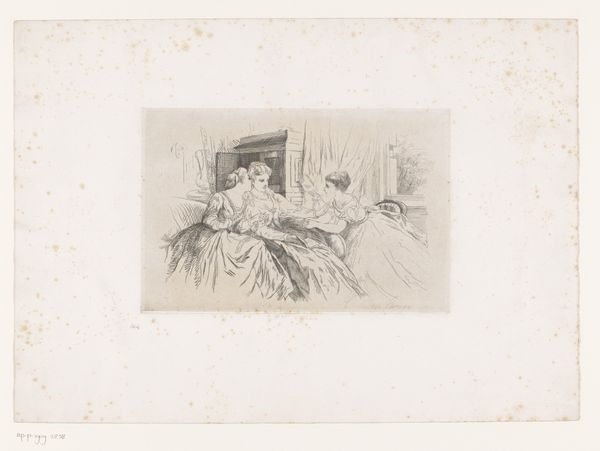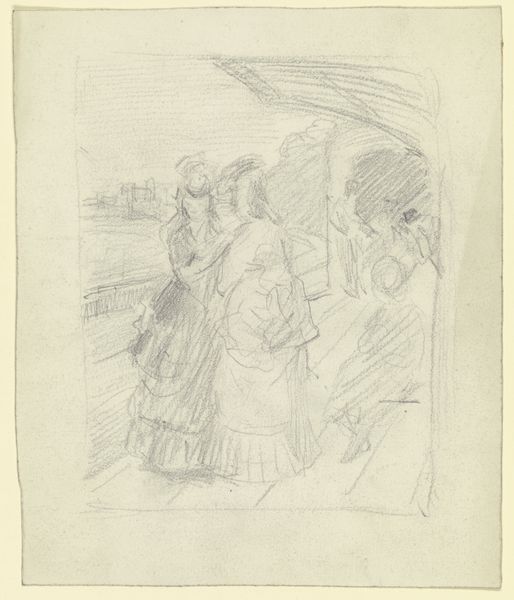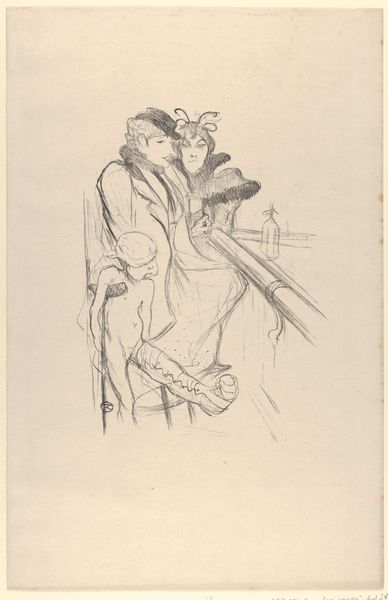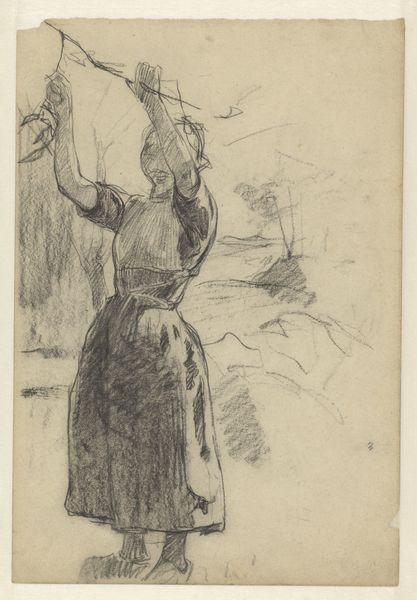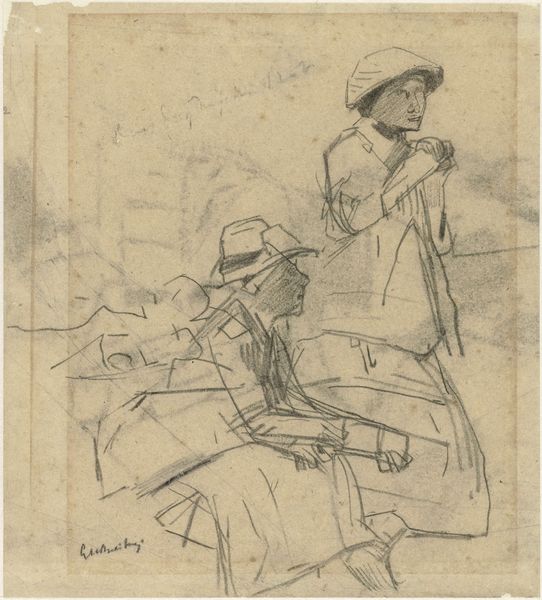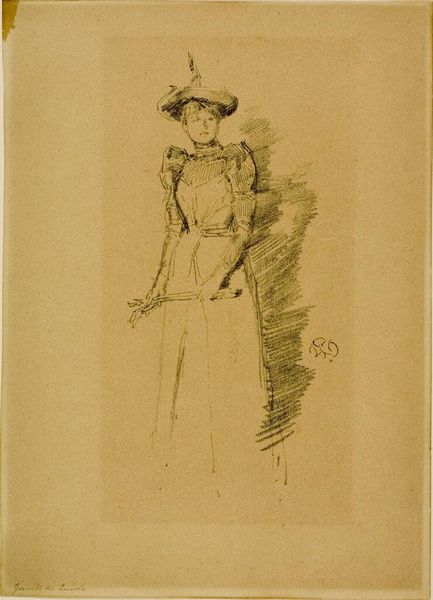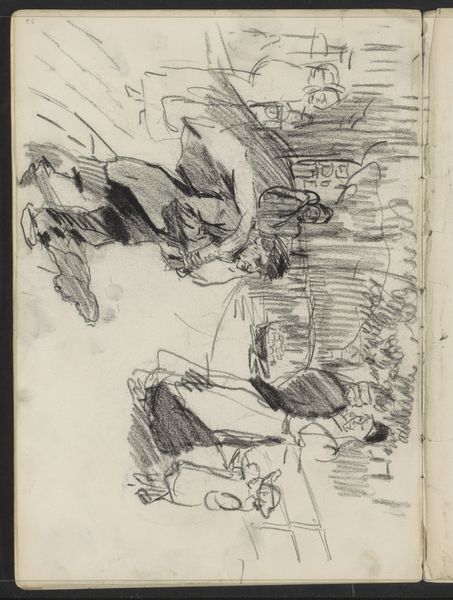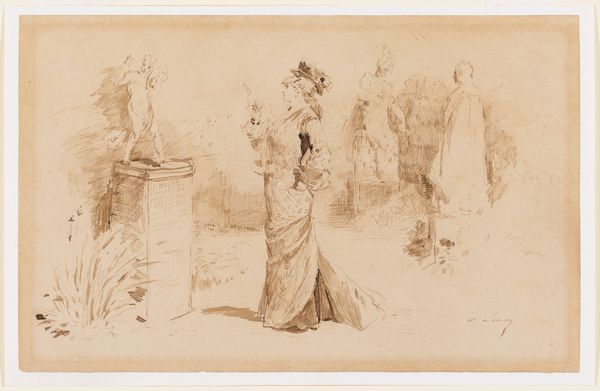
drawing, paper, pencil
#
drawing
#
impressionism
#
landscape
#
figuration
#
paper
#
pencil
#
line
#
genre-painting
Dimensions: 11 1/2 x 10 1/8 in. (29.2 x 25.7 cm)
Copyright: Public Domain
Editor: So, this is Winslow Homer's "The Croquet Players" from 1866, a pencil drawing on paper. The lines are so delicate and there is such spontaneity in the scene. How do you interpret the composition of this drawing? Curator: Observe the arrangement of forms within the pictorial space. Notice how Homer employs line to create a sense of depth, yet there's an intentional flatness. The foreground figures dominate, while the background is subtly suggested. Consider the role of negative space. Editor: It's like the absence of detail throws the focus on the details we *do* see. But what about the rough edges of the paper itself? They almost seem to be a part of the work. Curator: Precisely. The ragged edges of the paper aren't merely incidental; they foreground the materiality of the drawing. They are an intrinsic aspect, inviting us to contemplate the process of creation and the status of the artwork as object. What effect do you think is achieved using line versus shading in this drawing? Editor: It feels like line defines the figures’ structure, it feels like just enough information is present, but everything else is an ephemeral construction or a field of open potential for change. The shading would solidify them too much. I hadn't thought about the drawing's incompleteness adding to that effect. Curator: Exactly, a semiotic interpretation could posit the unfinished nature as symbolic of the constant state of becoming. Now, reflect on the contrast of textures. How does that interplay between the smooth paper surface and the gestural strokes of the pencil impact your understanding? Editor: Now I see. I was so caught up in the figures that I overlooked how the *process* and *materials* contribute to the final effect. I appreciate seeing it as more than just a scene, but as an arrangement of marks and the exploitation of raw material. Curator: It’s about learning to perceive not only what is depicted, but how that depiction comes into being.
Comments
No comments
Be the first to comment and join the conversation on the ultimate creative platform.

